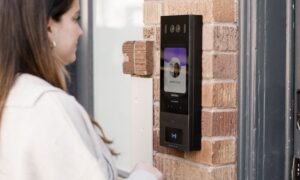The affordable housing crisis continues to challenge families across the country, with rising rental costs and limited availability making it difficult for low-income individuals to secure stable housing. However, advancements in technology are offering new ways to bridge this gap, streamlining housing access and making it easier for families to find and maintain affordable homes. From AI-driven property management to blockchain-based rental assistance, innovative solutions are transforming the landscape of affordable housing.
AI-Driven Property Management for Increased Efficiency
Artificial intelligence (AI) is playing an increasingly important role in making affordable housing more accessible and manageable. Property management systems powered by AI help streamline processes for both tenants and landlords, improving efficiency in rental applications, maintenance requests, and payment tracking.
AI-powered platforms can analyze rental market trends, predict vacancies, and match low-income families with available units that fit their budget. This automation not only reduces the administrative burden for landlords but also accelerates the rental process for tenants, ensuring that affordable housing options do not go unnoticed. Additionally, AI chatbots and virtual assistants can provide real-time support for families navigating rental agreements, lease terms, and government assistance programs, making the process less overwhelming for those unfamiliar with housing applications.
By leveraging AI, property management companies and housing authorities can reduce operational costs, ultimately lowering rental prices and making affordable housing more sustainable in the long run.
Modular Housing: Reducing Construction Costs and Expanding Availability
The use of modular housing has gained traction as a cost-effective and efficient solution to the affordable housing shortage. Unlike traditional construction, modular homes are built off-site in a controlled factory environment and then transported to their final location for assembly. This method significantly reduces building time, labor costs, and material waste—factors that often drive up the price of new housing developments.
Modular housing provides a scalable solution, allowing for faster construction of affordable housing units in areas where demand is high. These prefabricated homes are designed to meet safety and energy efficiency standards while remaining an affordable alternative to traditional housing. With their ability to be customized for various needs, including multi-family housing and single-unit dwellings, modular homes offer a practical path toward expanding affordable housing availability.
Additionally, 3D printing technology is further revolutionizing modular housing, making it even more cost-efficient. Some models of 3D-printed homes can be produced in as little as 24 hours, significantly lowering construction costs and providing rapid housing solutions for low-income families in urgent need of shelter.
Section 811 Vouchers and the Role of Digital Accessibility
The Section 811 program, which provides housing assistance for individuals with disabilities, has traditionally required a lengthy and complex application process. However, digital accessibility improvements are simplifying the way families and individuals apply for and manage their housing benefits.
Online portals and mobile applications now allow tenants to submit applications, track their status, and receive updates on available units in real-time. These digital tools help reduce paperwork errors, speed up processing times, and ensure that eligible applicants can access the resources they need without unnecessary delays.
Furthermore, technology is playing a role in making Section 811 housing more accessible beyond just applications. Smart home technology, including voice-activated assistants, automated lighting, and remote-controlled appliances, is being integrated into some Section 811 housing developments, improving the quality of life for tenants with disabilities. These advancements help ensure that affordable housing is not only available but also inclusive for all residents.
Blockchain-Based Rental Assistance for Security and Transparency
Blockchain technology is emerging as a game-changer in the rental assistance process, offering a more secure and transparent way to distribute housing funds. Traditional rental assistance programs often face challenges related to delays, fraud, and administrative inefficiencies. Blockchain-based systems provide an immutable, decentralized record of transactions, ensuring that rental subsidies reach landlords and tenants efficiently.
By using blockchain for rental payments, tenants can securely store and share their rental history, reducing the risk of eviction due to payment disputes or clerical errors. Additionally, smart contracts—self-executing agreements stored on the blockchain—can automate the rental payment process, ensuring that funds are transferred directly from assistance programs to landlords without intermediaries. This level of transparency benefits both tenants and property owners, fostering trust and stability in the affordable housing market.
Blockchain-based rental assistance can also help housing authorities manage funding more effectively, reducing administrative overhead and ensuring that resources are allocated where they are needed most. By eliminating inefficiencies in the system, blockchain technology has the potential to make affordable housing programs more accessible and reliable for low-income families.
The Future of Tech-Driven Affordable Housing
As the demand for affordable housing continues to grow, technology will play an even greater role in shaping the future of housing accessibility. AI-driven property management, modular housing innovations, digital accessibility improvements for housing vouchers, and blockchain-based rental assistance are just a few examples of how technology is transforming the industry.
While these advancements are promising, widespread adoption requires collaboration between policymakers, developers, and technology providers. Governments and housing organizations must embrace these innovations to ensure that low-income families can fully benefit from the technological advancements that are reshaping the affordable housing sector.
By leveraging smart solutions, the affordable housing crisis can be addressed more efficiently, making it easier for families to secure stable, cost-effective housing. As technology continues to evolve, its impact on affordable housing will only grow, bringing hope to millions in need of a safe and affordable place to call home.



































